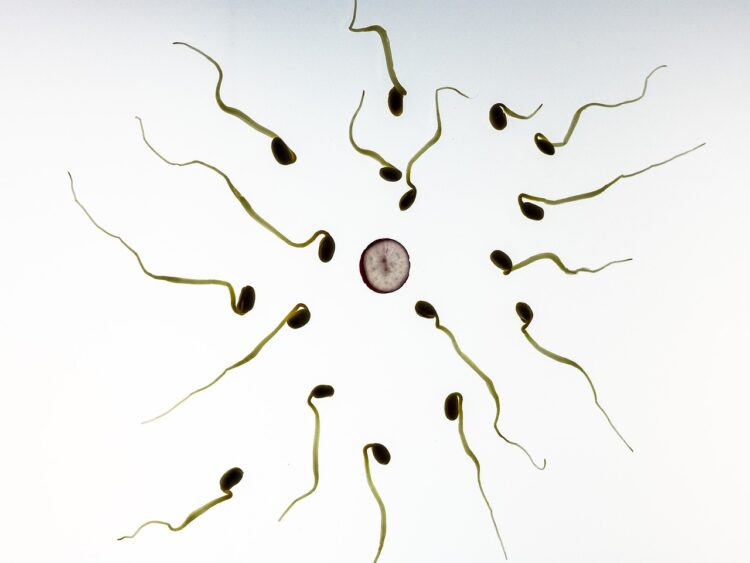The Link Between Fast Food and Infertility
The week of April 24-April 30 is National Infertility Awareness Week. Infertility, defined as the inability to conceive after 12 months of unprotected sex with the intention to become pregnant, is a troubling reality for many couples. The CDC estimates that 10.9% of women have trouble conceiving or carrying a pregnancy to term – that’s approximately 6.7 million women!(1) However, it’s also worth mentioning that while media and medical dogma has placed much of this burden on women, the male partner has been found to contribute to, or be the sole cause of, failure to conceive in 40% of infertile couples.(2)
There are many known and speculated causes behind infertility, spanning from medical conditions like Polycystic Ovarian Syndrome (PCOS), endometriosis, and untreated STIs like Chlamydia and Gonorrhea, to anabolic steroid use, smoking and alcohol intake, and increased exposure to electro-magnetic radiation. And while we know our diet impacts our health, new research suggests your nutrition could have a larger impact on your ability to conceive than you may have previously thought.
A study published earlier this month by the Environmental Health Perspectives branch of the NIH may demonstrate a link between infertility and fast food. The article wasn’t looking at fertility specifically (I’ll make that jump for you as we go along), but instead looked at the relationship between fast food and phthalate exposure. Through their research, they were able to determine a dose-dependent correlation between fast food intake and phthalate concentration in the urine – essentially, the more fast food a person ate, the more phthalates that passed through their body.(3)
So what are phthalates? Phthalates are a group of chemicals primarily known for being added to plastics and vinyl products to increase their pliability (plasticity). However, phthalates show up in numerous consumer products, including cosmetics and other personal care items (shampoos, lotions, hairsprays, etc), wallpaper and shower curtain liners, flooring and textiles, adhesives, children’s toys and…food packaging – just to name a few.(4)
While the complete scope of potential health hazards related to phthalates is far from being fully understood, some have been recognized as carcinogenic (cancer causing), while others have been shown to negatively impact reproduction and development in both men and women.(4) This is because phthalates are considered endocrine disruptors – which means they mess-up normal hormonal processes that relate to brain function, immune regulation, and reproduction.
A study done in China in October 2015 compared urinary phthalate concentration to semen characteristics in 1040 men over a 4-month period. Their results demonstrated a correlation between increased urinary phthalates with low sperm concentration, decreased total sperm count, and abnormal sperm formation.(5)
A similar study published in November of the same year found that certain phthalates were in higher concentration in infertile males than in fertile ones, and also correlated to reduced levels of testosterone.(6)
Just one month later, another study was published in the Journal of Reproductive Toxicology that showed a trend between increased urinary phthalate concentration in men and a reduced likelihood of successful implantation and successful live birth rates following in vitro fertilization (IVF) and intrauterine insemination (IUI) in their female partners.(7)
These are only a few of the many studies that have been recently published that demonstrate the harmful effects of phthalates on the reproductive system. Now at this point you might be wondering how these plasticizers are ending up in your French fries and hot dogs. Phthalates also show up in much of the machinery and packaging supplies used to process high volumes of fast and convenient foods. And like the pesky little chemicals they are, these phthalates leech their way into the foods they come in contact with. So, by the time you bite into your double-cheeseburger delux, you’ve also chomped down on some unknown number of havoc-wreaking phthalates.
It may be unreasonable to assume that, even as more knowledge about this topic comes to light, every person exposed to it will willingly give up all of their fast food fixes. Life is about finding a balance. Treating your soul to the drive thru every once in a while is not likely to have a massive impact on your future childbearing years. However, if we continue to live off the quick convenience foods that the American lifestyle has become so comfortable with and accustomed to, it is entirely possible that the number of women reported by the CDC as dealing with infertility could rise well beyond the current 6.7 million.
This information highlights the importance, once again, of emphasizing whole (unprocessed) foods in our diets. Highlighting vegetables and fruits at every meal will not only provide the essential vitamins and minerals needed for a balanced diet, but it will also increase the antioxidants and nutrients available to the body to combat the negative effects of our “cheat days.” Does this mean you have to limit your burger consumption to once every couple of months? Not necessarily. But it should encourage consumers to break out their own grill a little more. Buy locally produced, grass-fed meats that haven’t been heavily processed; garnish with organic greens; and heck – why not make your own homemade ketchup while you’re at it. Your future children might thank you and when you enjoy a meal together, just remember to “hold the phthalates, please.”
References:
1. Cfor DCand P. Infertility. Centers for Disease Control and Prevention. 2015. Available at: http://www.cdc.gov/nchs/fastats/infertility.htm.
2. ASfor RM. Quick facts about infertility. American Society for Reproductive Medicine. 2016. Available at: https://www.asrm.org/detail.aspx?id=2322.
3. Zota, AR, Phillips, CA, Mitro, SD. Recent Fast Food Consumption and Bisphenol A and Phthalates Exposures among the U.S. Population in NHANES, 2003–2010. Environmental Health Perspectives. doi:10.1289/ehp.1510803.
Advanced Publication 13 April 2016
4. SIS, EHand T. Tox Town – Phthalates – Toxic chemicals and environmental health risks where you live and work – Text Version. Tox Town – Phthalates – Toxic chemicals and environmental health risks where you live and work – Text Version. 2015. Available at: https://toxtown.nlm.nih.gov/text_version/chemicals.php?id=24.
5. Wang, Y-X, You, L, Zeng, Q, et al. Phthalate exposure and human semen quality: Results from an infertility clinic in China. Environmental Research. 2015;142:1–9. doi:10.1016/j.envres.2015.06.010.
6. Chang, W-H, Li, S-S, Wu, M-H, Pan, H-A, Lee, C-C. Phthalates might interfere with testicular function by reducing testosterone and insulin-like factor 3 levels. Human Reproduction Hum Reprod. 2015;30(11):2658–2670. doi:10.1093/humrep/dev225.
7. Dodge, L, Williams, P, Williams, M, et al. Associations between paternal urinary phthalate metabolite concentrations and reproductive outcomes among couples seeking fertility treatment. Reproductive Toxicology. 2015;58:184–193. doi:10.1016/j.reprotox.2015.09.007.
Epub 2015 Oct 9

